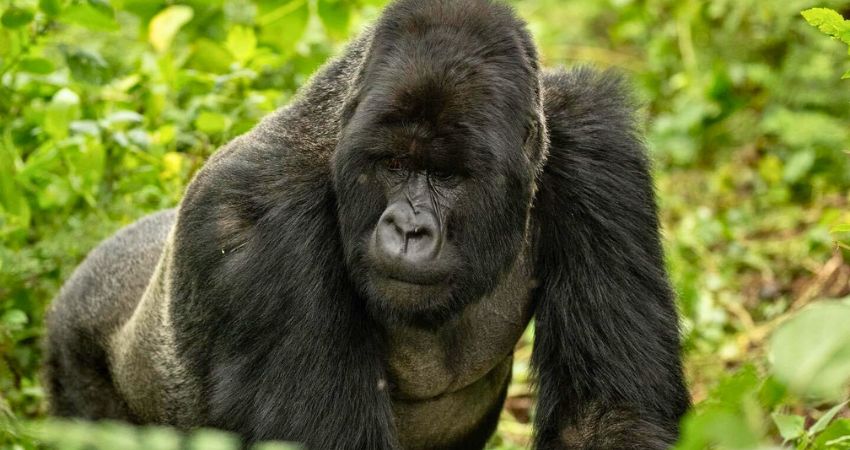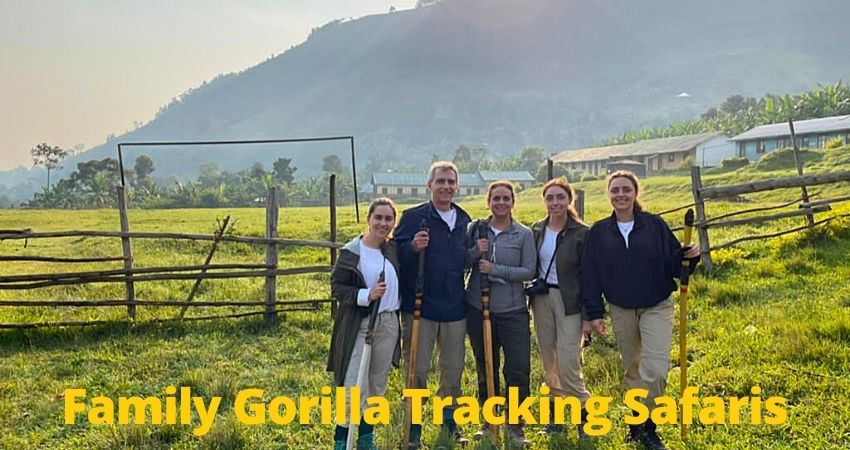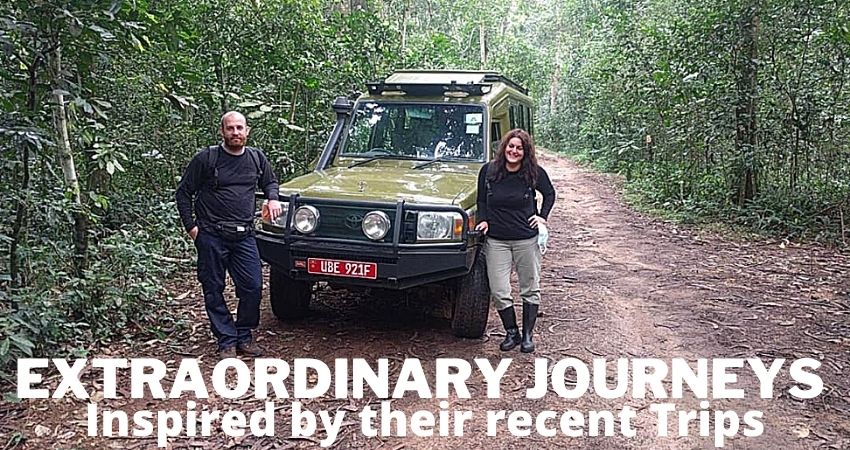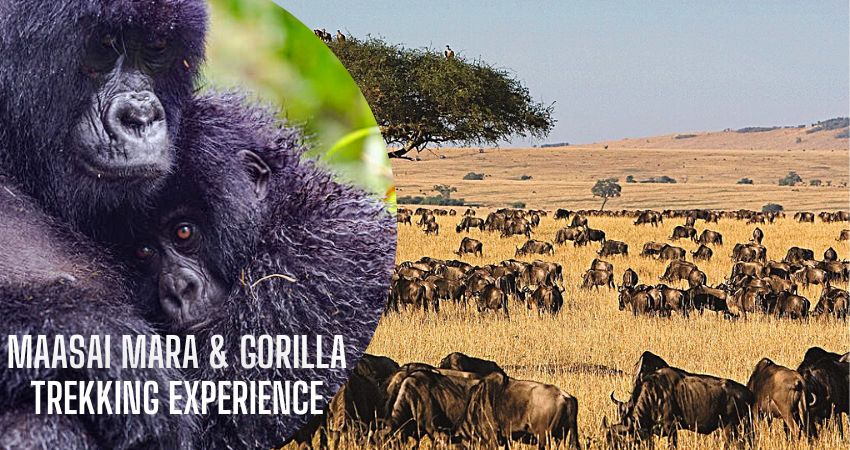
Carbon Free Experiences in Uganda
Carbon-free experiences in Uganda have saved the damage that emissions cause to the ecosystem which is habitat for wildlife. Currently, we are encouraging our guests to embrace and participate in various Carbon-free experiences like mountain gorilla trekking, Mountain hiking, Chimpanzee trekking, Horseback riding, and Guided nature walking, these experiences require a reduction in the use of gas/fuel and oil. BOOK NOW
It’s no brainer that tourism is a huge business. According to the Ministry of Tourism, Wildlife, and Antiquities, Uganda’s largest foreign exchange earner and fastest-growing industry generated $729 million in revenue in the financial year 2022/2023, with 814,508 International arrivals recorded- 58.8% more people than in 2021 (where 512,945 visitors were recorded). That’s a huge number of people trampling upon the country’s already fragile environment (especially the National Parks that most people visit). Challenged by the long-term costs that are linked to this nature of rapid growth, “carbon-free tourism” is now becoming the 21st-century tourism buzz, and the past years have experienced an increase in the number of tourists looking for activities that leave a reduced carbon print. If you are the kind of visitor looking to enjoy carbon-free experiences during your visit to Uganda, here are some of the interesting ones to choose from;
The endangered mountain gorillas are creatures that not many visitors are familiar with, and it is a once-in-a-lifetime experience to see them in the Wild. There are currently two places offering the opportunity to see these unique animals- Bwindi Impenetrable and Mgahinga Gorilla National Parks, with a total of 20 habituated gorilla families. This endangered Giant Apes can only be tracked on foot hence leaving a minimal carbon print behind. Additionally, a number of guidelines are issued to visitors, most of which protect the environment and these include limiting the number of people tracking a habituated gorilla family to 8 visitors, encouraging visitors to practice the “pack it in, pack it out” principle by not throwing rubbish in the forest while tracking, and not making noise while tracking the mountain gorillas.
Mountain Climbing/Hiking
Mountain climbing and low-carbon print go hand in hand. This thrilling adventure offers an environmentally-friendly way for nature lovers to explore the stunning landscapes as well as outstanding ecosystems while taking in awe-inspiring views from high-lookout viewpoints. If you visit Mount Elgon, the Rwenzori Mountains, and the Virunga Volcanoes (in Mgahinga Gorilla National Park), you can experience some of the miles of hiking trails on foot while relishing birding and discovering the unique wildlife and plant species. Before your hiking tours, the guide will encourage several responsible tourism practices to be followed during mountain climbing/hiking such as using reusable water bottles (possibly not plastic), carrying your snacks in environmentally-friendly materials like bioplastics and bamboo, practicing the “pack it in, pack it out” principle, and desisting from disturbing animals and birds in their natural habitats.
Guided Nature/Bush walks
Guided nature/bush walks have it all carbon-free and provide up-close encounters with Mother Nature (birds, wildlife, plants, and butterflies). Conducted on foot and accompanied by armed Ranger guides (to provide protection from stray animals), these walks make it possible for visitors to not only leave a lower carbon print but also explore places that are hard to reach during drives (which even have an effect on the environment). These adventures are provided in all the 10 National Parks in Uganda, Wildlife Reserves, and even areas around accommodation facilities.
Chimpanzee Tracking
Another exciting and educational carbon-free experience in Uganda is chimpanzee tracking, done in Kibale Forest National Park, Kyambura Gorge (in Queen Elizabeth National Park), Budongo Forest, Kalinzu Forest, or Semliki National Park to understand the interesting behavior of primates that are actually our closest relatives in the animal Kingdom. These treks last 1-4 hours with sights and sounds of the jungles and are climaxed with a one-hour encounter with these Great Apes in their natural habitats.
Village/Community Walks
Village/community walks provide authentic interactions with the local people, to learn about their day-to-day life, get an insight into their local culture, and build connections that last a lifetime. During these tours, travelers can learn about their local foods and even have a taste (drink and dine like a local), watch and take part in traditional dances and music, and get to experience a real village life thrill. For every destination you visit in Uganda, you can enjoy a village/community walk but the commonest ones are the Batwa community (around Bwindi Impenetrable and Mgahinga Gorilla National Parks), the Karamojong community (around Kidepo Valley National Park), the Bigodi wetland community (near Kibale Forest National Park), Boomu Community/village close to Murchison Falls National Park, the Sipi Widows’ Group and the Elgon community of Budadiri (around Mount Elgon National Park), to mention but a few.
As an alternative to driving around the safari destination (especially Lake Mburo National Park) with hundreds of other safari vehicles looking for the animals, you can actually track them on horseback. It is not surprising that animals are less alerted or alarmed by horses compared to vehicles. In so doing, you are able to get closer to the animals than you would have if you were using a car. Interestingly, you will not only get the chance to experience the unspoiled beauty of Mother Nature in a quiet and easy-paced trip on horseback. When you visit Lake Mburo National Park (the only Park that offers this experience), you will follow trails made by herds of Cape buffaloes, impalas, bushbucks, warthogs, or Defassa waterbucks, instead of man-made game tracks.
Golden Monkey Tracking
Golden monkey tracking in Uganda is only done in Mgahinga Gorilla National Park and involves searching for the endangered small golden-brown-colored primates on foot. Thanks to the fact that visitors track these creatures on foot instead of by vehicles (which wouldn’t have been possible due to the terrains and vegetation of the Protected Area), visitors are not only offered up close and personal encounters with these primates but also leave a small carbon footprint. Guidelines such as not throwing rubbish in the Park and the fact that the activity is done once a day mean the natural environment is protected from destruction.
Cycling Tours
Instead of exploring the Cities (especially Kampala, Entebbe, and Jinja) with vehicles, you can opt for the cycling tours. This is also possible in the National Parks (especially Lake Mburo National Park) where you can discover the beauty and diversity of animals in a different and better way (than safari vehicles). Cycling is every nature lover’s ultimate wilderness experience, and thanks to the routes that have been designed, visitors can see different parts of the Park while cycling. Done with an experienced guide, there is no need to worry about safety and where to go to see lots of animals.



